# iOS App
The openHAB iOS application is a native client for openHAB, compatible with iPhone and iPad.
# openHAB (Primary)
This is the primary openHAB app which contains the latest features and is updated regularly. This includes Apple Watch support, enhanced notifications, widgets and more. Requires at least iOS 16 and openHAB 2.x and later.
(Official App Store Link Coming Soon)
![]() Beta releases are available on TestFlight (opens new window).
Beta releases are available on TestFlight (opens new window).
# openHAB V1 (Legacy)
This is the legacy app for users on iOS 15 or earlier as well as openHAB system 1.x and later (tested to at least openHAB 4). This app only receives security updates and minor fixes and is not intended for most users.
Beta releases are available on TestFlight (opens new window).
# Features
- Control your openHAB server directly and through a openHAB Cloud instance (opens new window)
- Enhanced push notification from openHAB Cloud and the openHAB cloud binding
- Apple Watch companion app
- Widgets (coming soon!)
- Natively supports both iPhone and iPad
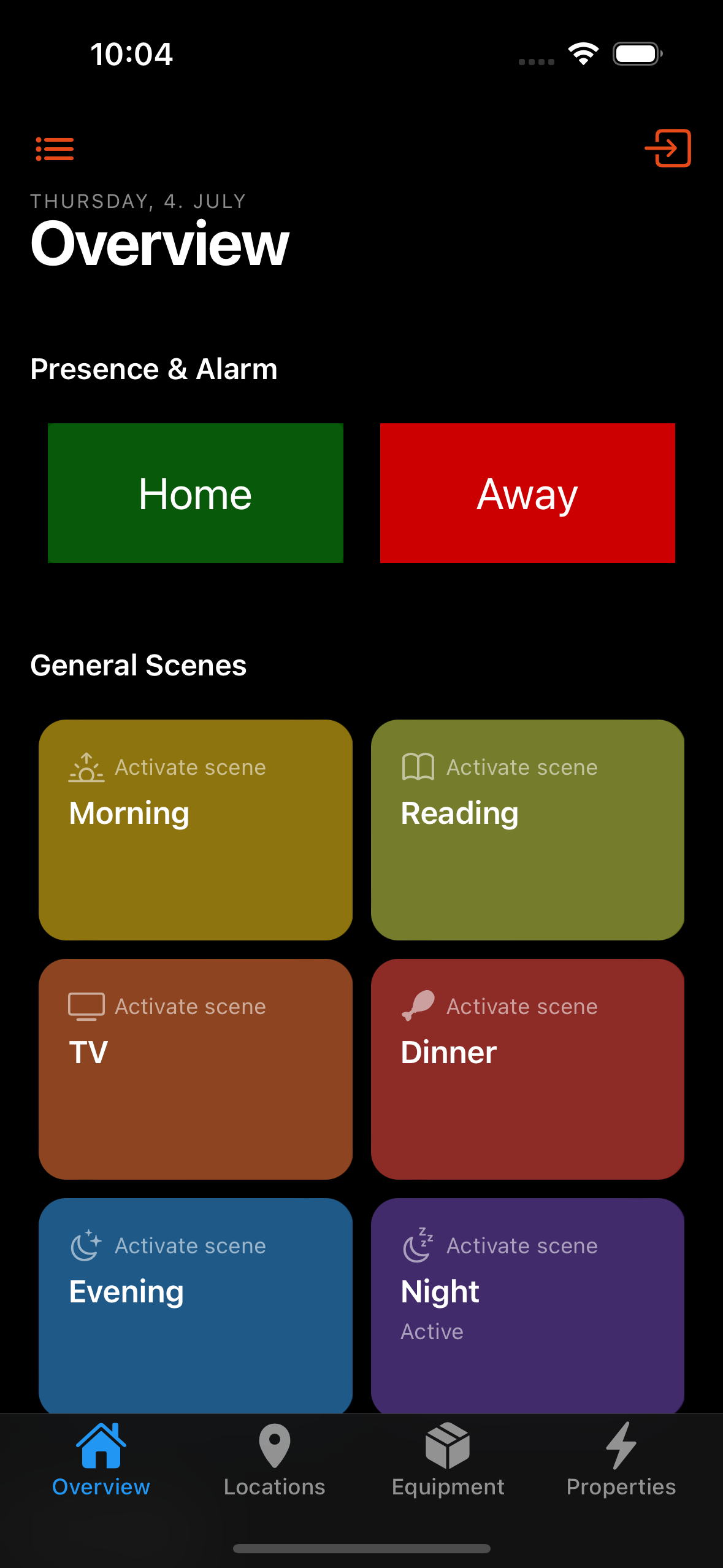
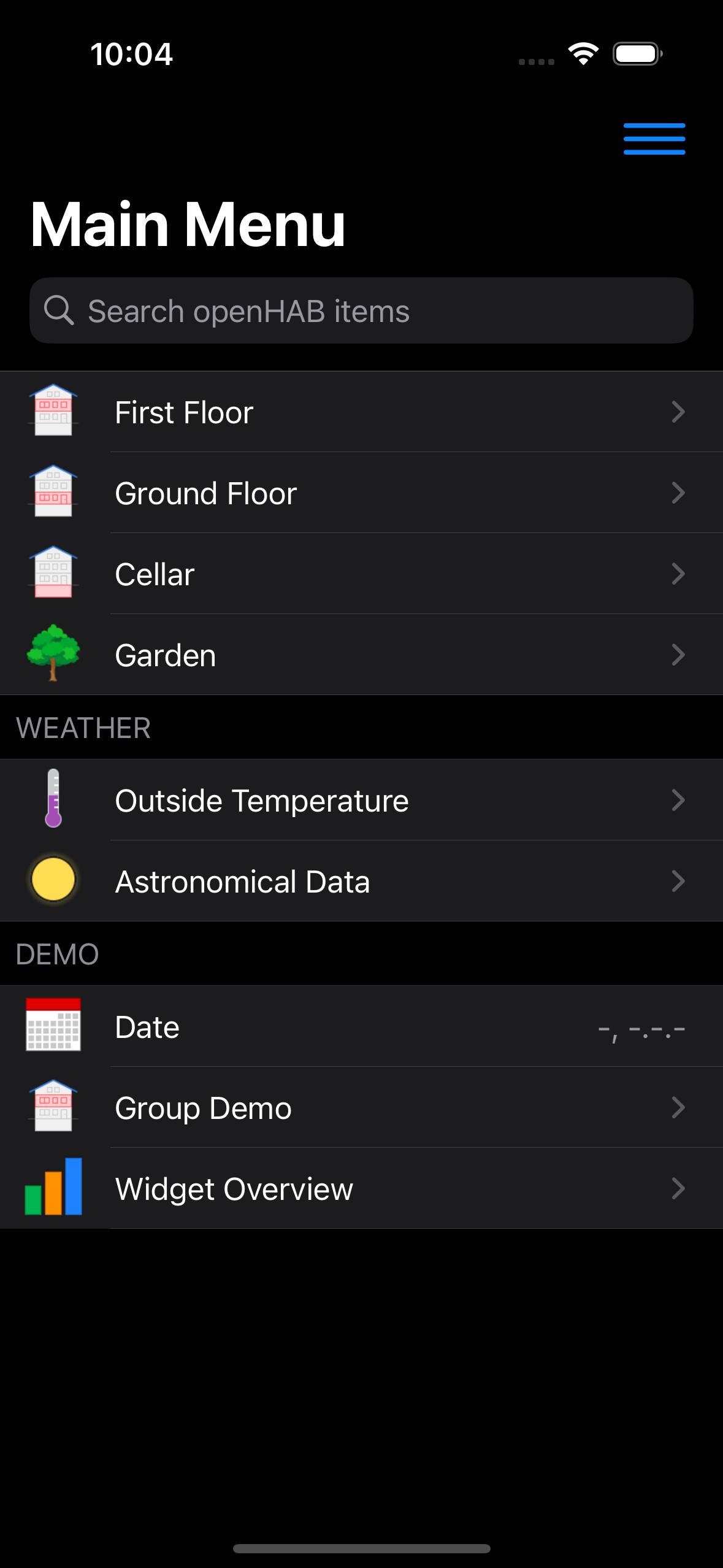
# App Configuration
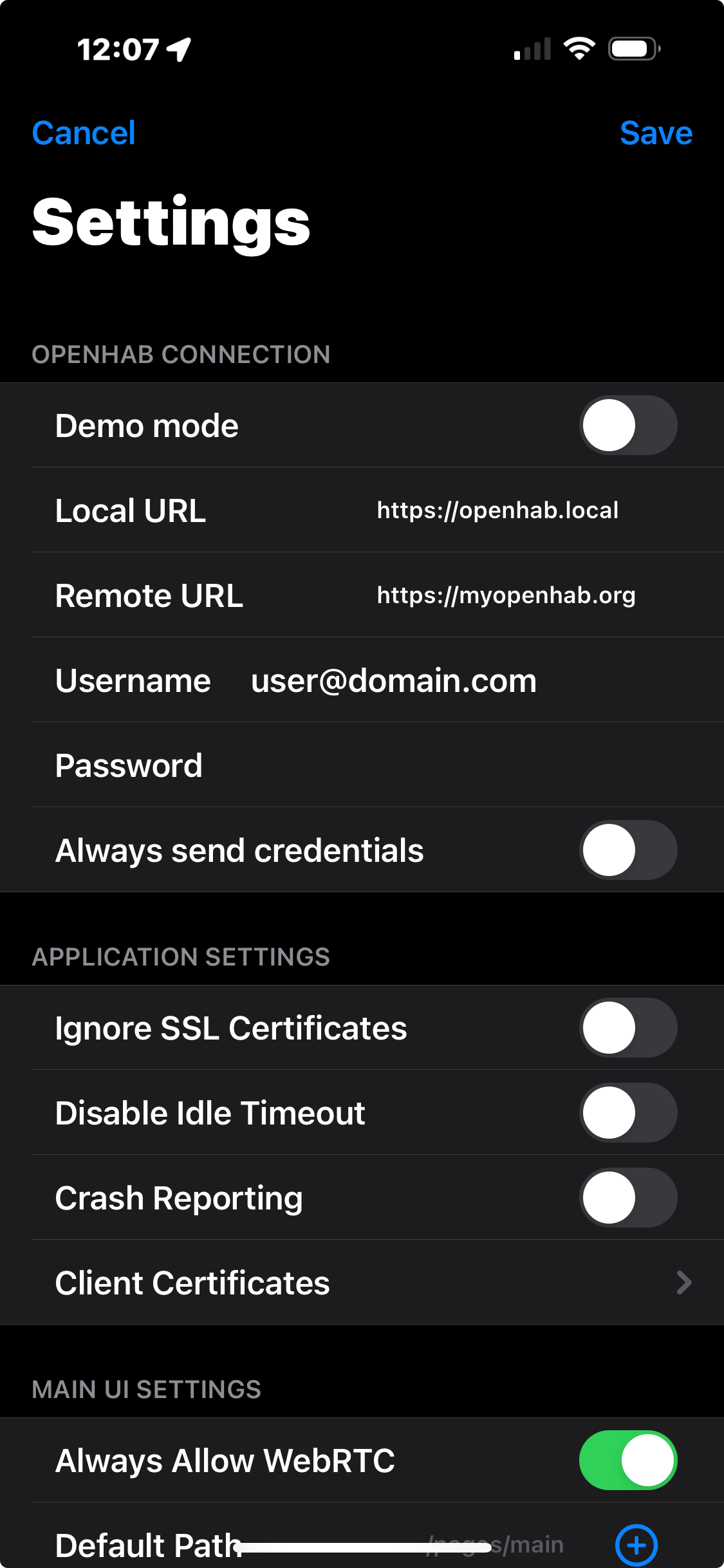
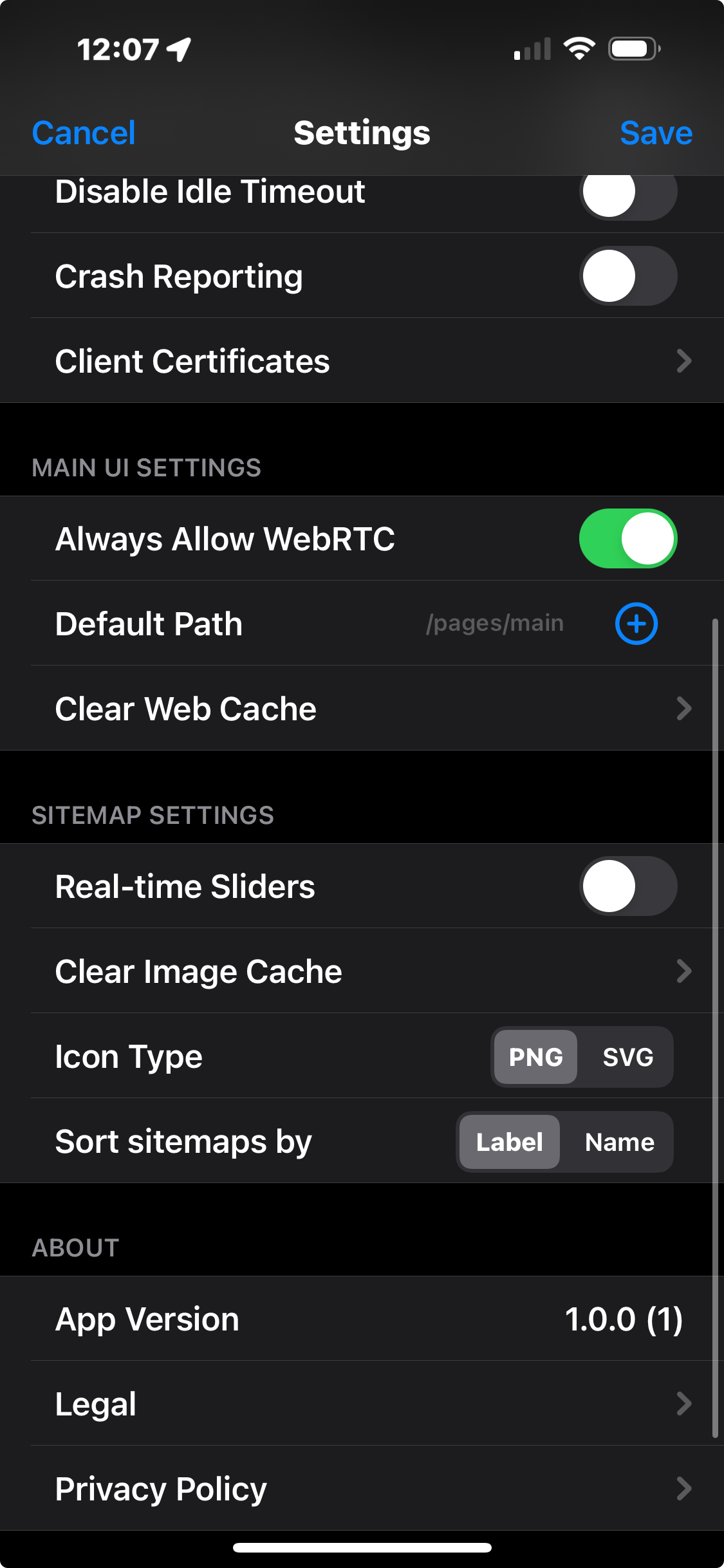
# Connection Settings
The app will try and connect using the Local URL as the primary connection, and if that fails or is not reachable, falls back to the Remote URL.
# Demo Mode
This sets up the app to use the openHAB demo server and can be used to experience the app without needing to install openHAB.
# Local URL
This is the primary connection to your openHAB instance, a fully qualified URL with a IP or host is required.
Example:
https://openhab.local:8443
# Remote URL
This is the secondary connection to your openHAB instance, a fully qualified URL with a IP or host is required.
If using the openHAB cloud service, leave this as the default setting of https://myopenhab.org.
When set to the public cloud, the app will also register for push notifications (as long as credentials are correct)
Example:
https://myopenhab.org
# Username / Password
This will be sent if the local or remote server challenges for authentication, or if "Always Send Credentials" is checked on. If using the openHAB cloud, these should be set to those login credentials.
# Application Settings
# Certificates
Allows the installation of p12 formatted certificates for use in client side authentication setups.
To install a client certificate, rename the certificate with the extension .ohp12, then send it to your iOS device (airdrop, icloud, dropbox, etc..), then open/save and select openHAB from the "Open In" menu (you may need to select "More..." to see all apps).
To delete a certificate, swipe left on the certificate name in the certificate menu.
If using openssl v3 to generate certificates, make sure to add -legacy -certpbe pbeWithSHA1And40BitRC2-CBC to the pk12 export command.
See Apple OpenSSL 3.0.x Issues (opens new window) for more information on V3 compatibility with Apple products.
# Idle Timeout
Useful for wall or fixed installations, will disable the Idle screen timeout.
# Crash Reporting
Sends crash reports to Google / Firebase.
# Main UI Settings
# WebRTC
Allows audio and video communications in the Main UI for views and widgets that require it.
# Default Path
Allows the user to enter a path to act as the starting point when the Main UI is loaded. Clicking the "+" button will prompt to enter the current path the of Main UI view.
# Clear Cache
Clears the Main UI web cache.
# Sitemap Settings
# Realtime Sliders
Allows sitemap sliders to send changes as the control is sliding in realtime.
# Image Cache
Clears the sitemap cached images.
# Icon Type
Select which type of icon the sitemap view will attempt to load for icons.
# Sitemap Sorting
Sort order when presenting multiple sitemaps for selection.
# Apple Watch Configuration
The Apple watch requires a sitemap with the name watch.sitemap.
Note that some advanced sitemap features may not be supported on the Apple watch and its recommended to keep this sitemap simple and appropriate for interaction on a small display.
When using the Watch app, slide left to bring up the configuration view and select "sync" to ensure the local, remote and username/password configurations are synced to the watch.
# Main UI and Sitemap Usage
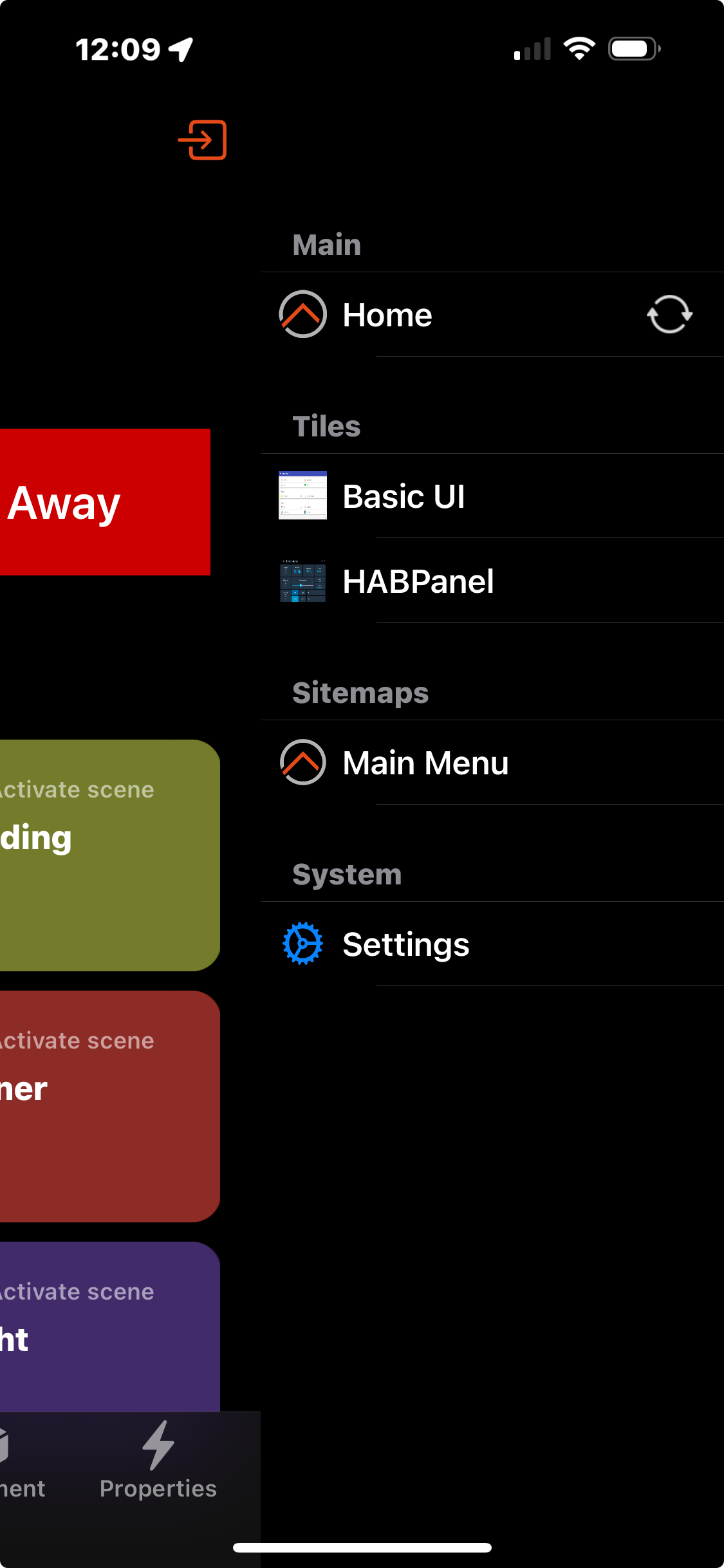
Clicking "Home" will navigate to the Main UI from the user's openHAB system. Clicking this when the Main UI is already visible will force a reload the Main UI.
Tiles are the alternative UIs installed on a user's system and will be opened in an embedded browser.
Sitemaps show the available sitemaps on the users system. Selecting a sitemap will present the native sitemap renderer view.
Notifications is a list of push notification retrieved from the openHAB cloud (if configured).
Settings opens the application settings view.
The app will persist the last primary view opened (Main UI or Sitemaps) when the app is opened or restarted.
# Push Notifications
The openHAB Cloud Connector (opens new window) allows users to send push notifications mobile devices registered with an openHAB Cloud instance (opens new window) such as myopenHAB.org (opens new window).
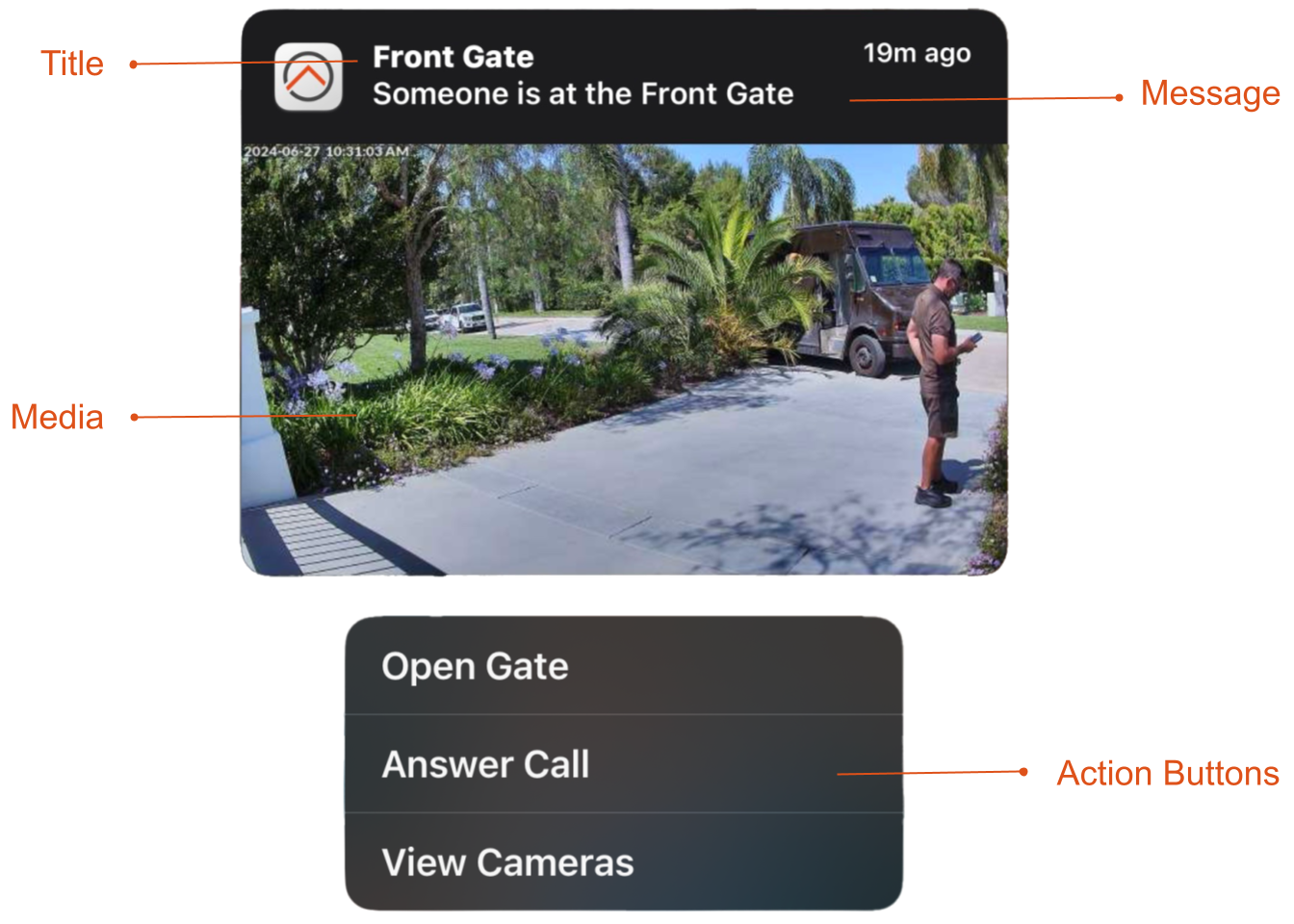
Push Notifications on iOS support:
- Title and message text
- Image and video attachments
- Up to 3 action buttons (long press notification)
- Collapsible / updated notifications
- Removing notifications
# Widgets
Coming soon !
# Help and Resources
If your question or problem isn't covered here in the documentation pages, check the openHAB Community Forum (opens new window).
Also, please refer to the openhab.ios project (opens new window) on GitHub for more technical details.